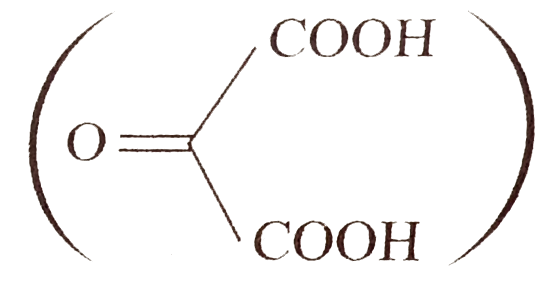C4H8 with acidified KMnO4 gives effervescence of a gas and ketone the compound is
But-1-ene
Cis-But-2-ene
Trans-But-2-ene
2-Methylpropene
To solve the problem, we need to identify the compound C4H8 that reacts with acidified KMnO4 to produce effervescence (indicating the release of a gas, likely CO2) and a ketone.
1. Identify Possible Structures of C4H8:
- The molecular formula C4H8 suggests that it could be an alkene or a cycloalkane. The possible structures include:
- Butene (1-butene, 2-butene)
- Methylpropene (2-methylpropene)
- Cyclobutane
2. Reactions with Acidified KMnO4:
- Acidified KMnO4 is a strong oxidizing agent and can oxidize alkenes to form carbonyl compounds (aldehydes or ketones) and carboxylic acids.
- The reaction of alkenes with KMnO4 typically leads to the formation of ketones or carboxylic acids, depending on the structure of the alkene.
3. Analyzing Butene:
- 1-Butene: When 1-butene reacts with acidified KMnO4, it would primarily yield butanoic acid, not a ketone.
- 2-Butene: When 2-butene reacts, it can yield butan-2-one (a ketone) and carbon dioxide, but it does not produce effervescence.
4. Analyzing 2-Methylpropene:
- 2-Methylpropene: When 2-methylpropene reacts with acidified KMnO4, it can yield acetone (a ketone) and carbon dioxide. This reaction is consistent with the formation of both a ketone and the effervescence of gas.
5. Conclusion:
- The compound C4H8 that reacts with acidified KMnO4 to produce a ketone and effervescence is 2-methylpropene (also known as isobutylene).
Final Answer:
The compound is 2-methylpropene.
- The molecular formula C4H8 suggests that it could be an alkene or a cycloalkane. The possible structures include:
- Butene (1-butene, 2-butene)
- Methylpropene (2-methylpropene)
- Cyclobutane
- Acidified KMnO4 is a strong oxidizing agent and can oxidize alkenes to form carbonyl compounds (aldehydes or ketones) and carboxylic acids.
- The reaction of alkenes with KMnO4 typically leads to the formation of ketones or carboxylic acids, depending on the structure of the alkene.
- 1-Butene: When 1-butene reacts with acidified KMnO4, it would primarily yield butanoic acid, not a ketone.
- 2-Butene: When 2-butene reacts, it can yield butan-2-one (a ketone) and carbon dioxide, but it does not produce effervescence.
- 2-Methylpropene: When 2-methylpropene reacts with acidified KMnO4, it can yield acetone (a ketone) and carbon dioxide. This reaction is consistent with the formation of both a ketone and the effervescence of gas.
- The compound C4H8 that reacts with acidified KMnO4 to produce a ketone and effervescence is 2-methylpropene (also known as isobutylene).
The compound is 2-methylpropene.
Topper's Solved these Questions
Similar Questions
Compound (A)(C12H16) on oxidation with acideic KMnO4 solution gives acetone and
 . Identify compound (A).
. Identify compound (A).
View SolutionAn organic compound [A] C6H10, on reduction first gives [B] C6H12, and finally [C] C6H14. [A] on ozonolysis followed by hydrolysis gives two aldehydes [D] C2H4O, and [E] C2H2O. Oxidation of [B] with acidified KMnO4 gives acid [F] C4H8O2. Determine the structures of the compounds [A] to [F] with proper reasoning.
View Solution
Knowledge Check
Acidified KMnO4is decolourized by
ABr2BO3CHC1DBrBy passing H2S gas in acidified KMnO4, we get
ASBMnO2CKHSO3DK2SO3Acidified KMnO4 can be decolourised by:
ASO2BH2O2CFeSO4DFe2(SO4)3
An organic compound A(C6H10) on reduction first gives B(C6H12) and finally C(C6H14). Compound A on ozonolysis followed by hydrolysis gives two aldehydes D(C2H4O) and E(C2H2O2). Oxidation of B with acidified KMnO4 gives the acid F(C4H8O2). determine the structures of the compounds A to F with reasoning.
View SolutionAn organic compound [A] C6H10, on reduction first gives [B] C6H12, and finally [C] C6H14. [A] on ozonolysis followed by hydrolysis gives two aldehydes [D] C2H4O, and [E] C2H2O. Oxidation of [B] with acidified KMnO4 gives acid [F] C4H8O2. Determine the structures of the compounds [A] to [F] with proper reasoning.
View SolutionThree compounds A, B, and C are isomers of the formula C5H8. All of them decolourise bromine in CCl4 and give a positive test with Baeyer's reagent. All three compounds dissolve in cone. H2SO4. Compound A gives a white precipitate with ammoniacal silver nitrate, whereas compounds B and C do not react with it. On hydrogenation, in the presence of platinum catalyst, both compounds A and B yield n-pentane, whereas compound C gives a product of formula C5H10. On oxidation with hot acidified KMnO4, B gave acetic acid and CH3CH2COOH. Identify compounds A, B, and C.
View SolutionAn aromatic compound (A),C8H10, on oxidation with acidic KMnO4 gives dibasic acid. The compound (A) on nitration gives three isomeric nitro derivatives. The compound (A) is:
View Solution(A) The reaction of oxalic acid with acidified KMnO4 is first slow and then proceeds with faster speed. (R) Acidified KMnO4 is a strong oxidising agents.
View Solution